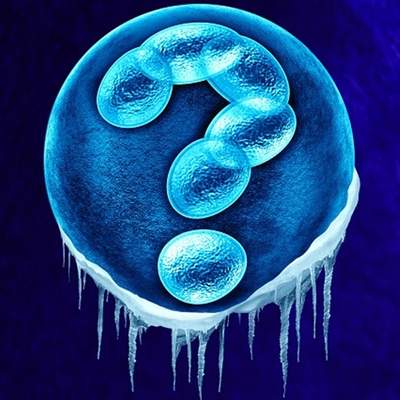Frozen Embryo Transfer
A Frozen Embryo Transfer (FET) is a process that involves thawing one or more embryos (cryopreserved or frozen previously) and transferring those to the uterus to achieve pregnancy in a woman.
When can a female get a FET procedure?
After the initial freeze, the embryos could remain viable for an infinite period. A fertility doctor may recommend a FET cycle after an unsuccessful IVF cycle. Sometimes a doctor does FET in couples with successful IVF surgeries looking for their second child.
What is the difference between fresh embryo transfer and FET?
A fresh embryo transfer is the final step of the IVF cycle. After retrieval and fertilization of female eggs with sperms in the lab, embryos so developed are transferred back into the uterus after 5-6 days post egg retrieval.
In frozen embryo transfer (FET), the embryos thus developed in the laboratory are frozen on the fifth or sixth day post egg retrieval, instead of being implanted into the uterus. Preimplantation genetic testing is done on the embryos before freezing them to detect the presence of any chromosomal diseases.
What is the rationale behind FET?
Let us first understand how frozen embryo transfer works in a female. There is a sudden spike in estrogen levels during the menstrual cycle just before ovulation. This spike of estrogen stimulates ovaries to produce progesterone. Progesterone triggers the synthesis of the innermost lining of the uterus-endometrium.
Pregnancy occurs when a fertilized gets implanted in this endometrium lining and starts growing.
Thus, the synchronization between progesterone action and synthesis of endometrial lining creates a favorable environment for achieving pregnancy
During the IVF cycle, sometimes the overstimulated ovaries produce a higher amount of estrogen. The higher estrogen levels trigger excessive progesterone synthesis. This hypersecretion of progesterone speeds up the production of the endometrial lining. This disturbs the synchronization between the two, increasing the chances of IVF failure.
FET could avoid this desynchronization. The embryologist during FET delays embryo transfer, until the body achieves the normal hormone levels in later cycles, thereby increasing the chances of pregnancy.
In FET, rather than implanting embryos immediately after IVF (when the hormone levels are abnormal), embryos are frozen.
As soon as the body recovers from the IVF-related stress and returns to a normal menstrual cycle, the embryos are first thawed and then implanted.
Which has a higher success rate FET or fresh IVF cycle?
FET cycle sometimes has better success rates when compared with fresh IVF cycles. This is because FET gives enough opportunity to the female body to optimize the endometrial lining before implantation. Though maternal age is one of the major determining factors for the success of FET transfer. Women over 35 years have higher chances of treatment failure,
What are some of the advantages of frozen embryo transfers over a fresh (stimulated) cycle?
Some of the benefits of frozen embryo transfers over a fresh (stimulated) cycle are as follows:
- Implantation rates,
- Better live birth rates
- Higher birth weights
- Lower miscarriage rates
- Lower ectopic pregnancy rates
- Fewer medications
- Less stress as compared to IVF cycle
- Low cost





